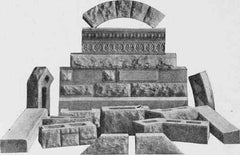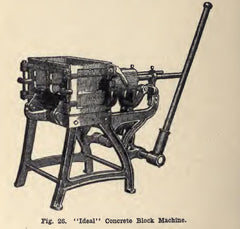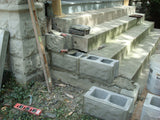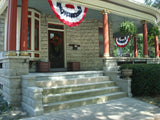History of Rock Face Block

During the late nineteenth and early twentieth centuries, the cost of lumber was rising. Homeowners were looking for an affordable yet quality substitute for lumber and pricey natural Limestone. Concrete was not only an affordable substitute, but it also offered energy efficiency, low maintenance and lasting results. And so, the rock face concrete block was born and became widely used across the United States and Canada.

Not only was the block more affordable, but easy-to-use machinery allowed experienced masons and novice homeowners alike to create the blocks. Using a small machine, blocks were made one at a time on the construction site. The block was typically used for foundations and porches but was occasionally used to construct entire homes and commercial buildings.

Sears Roebuck & Ideal Block Company were one of the largest manufacturers of these small portable rock face block machines. Hence, in many of the Sears kit home plans, rock face block is incorporated into the design. From small bungalows to large American Four-Square farmhouses, rock face block was used to construct anything from the foundation to the porch, to the entire home.
By around 1930 the cinder block was patented and became the norm and rock face block fell out of use. As these turn of the century homes are reaching their centennial mark, repairs and replacements are becoming necessary.



